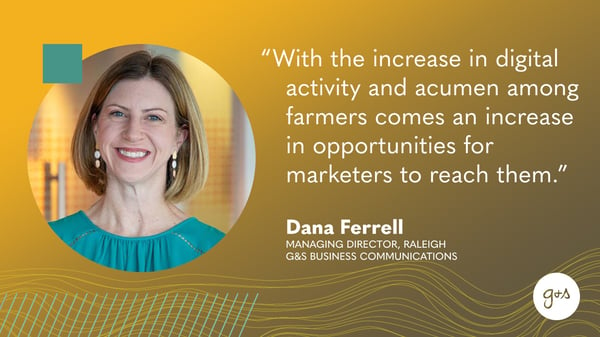Precision ag. Drone mapping. Artificial intelligence. A myriad of tech buzzwords have made their entrance into the world of agriculture. For some farmers, however, opportunities for innovation remain just beyond reach due to limited access to broadband in rural communities.
According to the Federal Communications Commission (FCC), 97 percent of Americans in urban areas have access to high-speed Internet service. Yet, in rural areas, that number falls to 65 percent. In 2019, the FCC established the Precision Ag Connectivity Task Force to promote precision agriculture and advance broadband access on agricultural land. These services are critical to developing and deploying new technologies that can transform everything about a farmer’s business model, including yield forecasting and profitability.
Initiatives to expand Internet connectivity to underserved regions have begun in the private sector as well. In July of this year, Land O’Lakes joined forces with 48 other businesses, trade associations, non-profits, municipalities and academic institutions to create the American Connection Project Broadband Coalition. The Coalition aims to help close America’s digital divide, one exacerbated by the pandemic and one that has turned Internet access from a luxury to a necessity for many Americans, particularly with the rapid implementation and adoption of e-commerce in both B2B and B2C sectors. In fact, coalition founder Land O’Lakes has established free, open Wi-Fi access points outside its business locations in more than 150 communities.

Striking a Balance
Increased access to broadband has the potential to reshape the way farmers operate, allowing the implementation of new tools that can significantly enhance crop production. It also has the potential to influence how farmers seek and consume information, make input decisions and purchase products.
With the increase in digital activity and acumen among farmers comes an increase in opportunities for marketers to reach them. Understanding when and how farmers access information can help align when and how we, as marketers, communicate with them. Digital engagement will continue to grow in importance as technology access and adoption advances. Maintaining an integrated media strategy that also includes traditional methods of communication, however, continues to be critical to success.
According to the 2020 Media Channel Survey conducted by the Ag Media Council, operators of farms and ranches rely on a variety of traditional and digital channels. Of the 2,941 respondents, about three fourths of operators (73%) consume ag magazines or newspapers at least weekly, followed by ag e-newsletters and websites. Thirty-three percent responded that they rely on social media as a source of information. It’s clear that no one channel is king but, rather, that integrating digital media into your existing media mix will help your messages cover more ground.
Leading in the Digital Space
If you are an ag marketer looking to engage in true digital transformation as an integral component of your media strategy, there are four key pillars to keep in mind. Nicholas Love, G&S VP of Digital Marketing, discusses the pillars, their significance and how to effectively apply them in this blog post.
The way farmers access and digest information is clearly evolving. As marketers, we must also evolve to meet them where they are – and in the way they prefer – to maintain a competitive advantage in the ag marketplace.
Reshaping the Future is our take on what’s next and how we can inspire action and succeed in the “new normal” together. Click here to see our full report, along with fresh data and insights. We’ll help you lead through the future, uncertain as it remains.